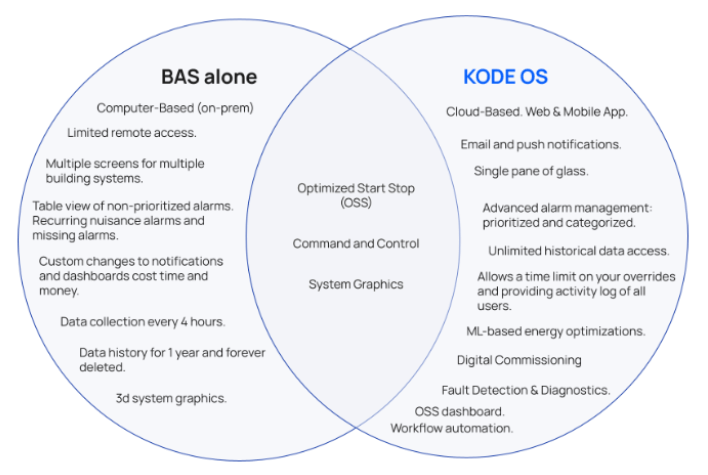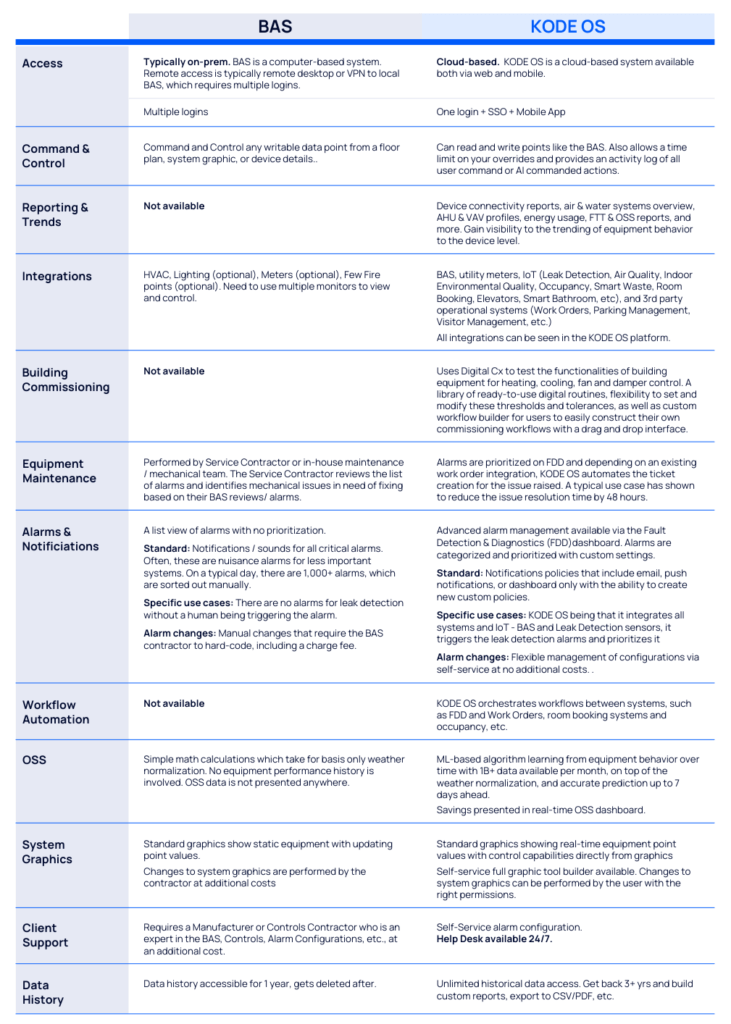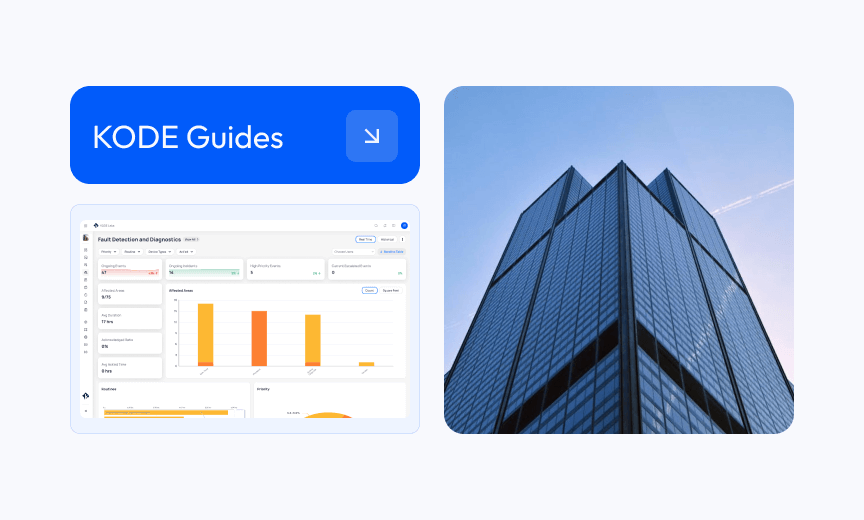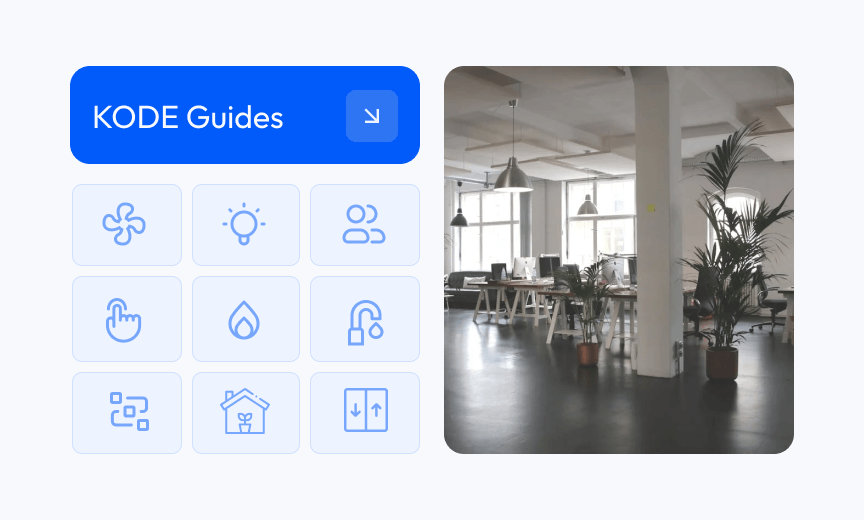By KODE Team
On this page
Sign up to our newsletter
Subscribe to receive the latest blog posts to your inbox every week.
By subscribing you agree to with our Privacy Policy.
What are the differences and why do you need KODE OS in your buildings?
Introduction
While KODE OS and BAS may initially appear similar as tools for managing building systems, KODE OS stands apart by offering enhanced capabilities and benefits that go beyond the scope of a traditional BAS.
What is a Building Automation System (BAS)?
A Building Automation System (BAS) is a computer-based system installed in buildings to control and monitor mechanical and electrical plants, including; HVAC (heating, ventilation, air conditioning), lighting, power systems, fire systems, and security systems.
Examples of the major subsystems controlled by the BAS are:
- HVAC System. The duct temperature, pressure, and humidity, as well as exhaust temperature are connected to the BAS, and if their value exceeds defined limits, an alarm is generated.
- Optional lighting and metering, an additional fire point.
What is KODE OS?
KODE OS is a cloud-based operating system that integrates core building systems, IoT and various operational systems across multiple buildings. It acts as a bridge between operational technologies and information technologies. KODE OS pulls and pushes data to ensure that operational data, such as building automation systems (BAS), meters, access control systems, elevators, and parking, seamlessly integrate with operational and IT systems like computerized maintenance management systems (CMMS), visitor management, sensors, and more.
KODE functions as a software overlay for the BAS, enhancing its capabilities rather than programming equipment control sequences – that’s a task for the BAS. By integrating with the BAS, KODE OS offers remote control and scheduling, transforming basic BAS features with additions like advanced alarm management, digital commissioning, in-depth analytics, compliance reporting, notifications, IOS & Android applications and more.

Why you need KODE OS on top of BAS
In recent years, while BAS control strategies have remained relatively constant and simple, our understanding of how people interact and experience a building’s internal environment has greatly expanded. This is paralleled by a significant increase in environmental compliance regulations.
A BAS is designed to run mechanical equipment but not to provide insight for making data-driven business decisions, i.e. occupancy levels, optimization of building operations, predictive equipment maintenance or replacement. KODE, however, offers all the core functionalities of the BAS with a number of additional benefits for operators and the business as a whole.

What are the main differences between BAS and KODE OS?
The main difference between BAS and KODE OS can be categorized into the categories presented in the table below.






